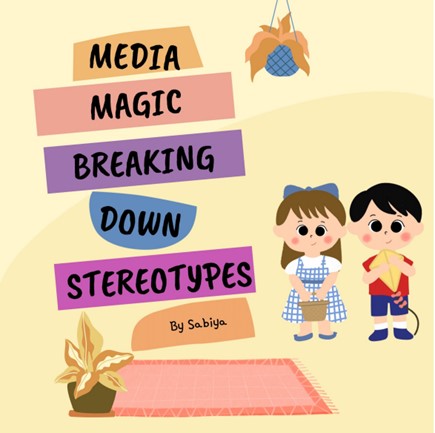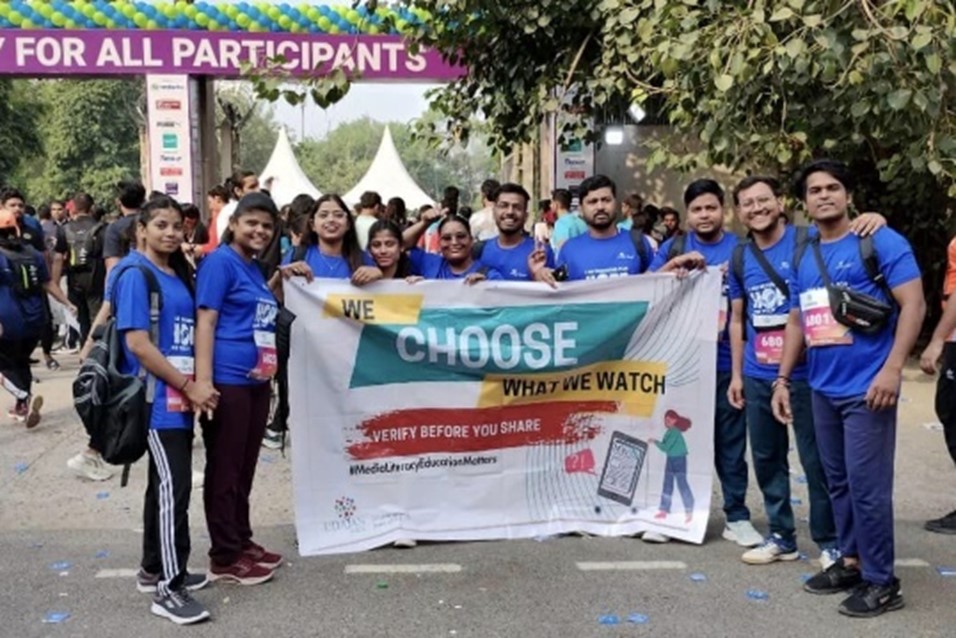Youth leaders increase resilience to manipulative information in communities across India

IREX's Learn to Discern India Academy (L2D-IA) program trained 198 youth leaders in media and information literacy and fostered collaboration to produce creative projects that enhanced media literacy skills and increased manipulative information awareness among youth in Chennai, Hyderabad, Kolkata, New Delhi, and Mumbai.
L2D-IA, funded by the U.S. Embassy in New Delhi, developed and launched a series of online media literacy courses to boost young Indians’ resilience to information manipulation. Information manipulation is prevalent in the Indian media environment, particularly on social media, and L2D-IA empowered 198 youth leaders to become discerning consumers of news and information and critically engage with media.
Prioritizing project-based learning
As part of the program, youth cohorts developed individual and group projects reflecting on what they learned from each of the four online courses led by IREX. Participants based their projects on various course-related topics and in a number of formats, including memes, posters, videos, lesson plans, training agendas, poetry, public awareness raising activities, and even wall murals.
By the end of L2D-IA, participants collectively created over 323 individual and 103 group projects, significantly surpassing initial program targets of 40 projects. Project presentations were a highlight of each of the program’s in-person learning sessions, and participants across cohorts learned from and inspired one another.
IREX’s Learn to Discern (L2D) approach is unique in its cascade or ripple effect. In L2D programs across the globe, IREX has found that L2D-trained youth and adults go on to share media and information literacy tips and skills formally and informally with others in their community. This cascade effect increases the indirect reach of IREX’s programs and resilience-building training. For L2D-IA participants, this also rang true, as the 200 youth trained by L2D-India reached 4,569 people through their projects.
Increasing media literacy through art
Perhaps one of L2D-IA’s most unique and creative projects came from the Mumbai cohort, who chose to paint three wall murals featuring L2D messages in public spaces. The Mumbai cohort received approval from the local Royal College of Arts, Science, and Commerce in Mira Road to paint the murals. Before choosing mural designs, the cohort participated in a “persona” exercise to better understand the needs, vulnerabilities, and challenges of the more than 2,000 students at the school. This exercise allowed the cohort to hone their messages and develop their creative designs. The murals were painted in areas with high foot traffic so students will constantly be reminded of media literacy messages, long after L2D-IA closes.
Creating literature to prevent information manipulation
In Hyderabad, a cohort of eight participants created a book titled "Finding Clarity” as a guide to media literacy. The book includes sections on decoding information, social media safety, ethics, and many other topics that align with the L2D-IA courses. The book was presented during the L2D-IA graduation ceremony in Hyderabad, and a copy was provided to the American Corner Coordinator in Hyderabad on behalf of the U.S. Consulate.

In Chennai, a participant created a children’s book about breaking down gender stereotypes that children may see in toy advertisements—in this case, that only girls play with dolls. Another Chennai participant developed the SocialSphere board game, where players navigate a fictional social media platform, sharing content and completing challenges while trying to avoid the pitfalls of echo chambers and filter bubbles. Filter bubbles occur when social media algorithms show us content we are pre-disposed to like or agree with based on what we already engage with on social media platforms – these filter bubbles restrict our exposure to information that could challenge or broaden our perspectives.
Designing trainings and events to enhance digital well-being
Many L2D-IA participants, none of whom had prior training experience, went on to organize and deliver L2D workshops for others in their communities under the guidance of L2D-IA master trainers. Youth champions trained over 400 college classmates, younger school students, children, NGO workers, and others in media and information literacy.
 In New Delhi, an L2D-IA champion organized a media literacy training spree for more than 40 youth in her community. She also conducted multiple training sessions at the NGO she works for and has developed and implemented shorter, more accessible modules for the 30 children with whom she works. She and other New Delhi cohort members participated in an awareness raising event where they created an L2D-themed banner to bring to a marathon race, reaching 35,000 racers and spectators with media literacy messages.
In New Delhi, an L2D-IA champion organized a media literacy training spree for more than 40 youth in her community. She also conducted multiple training sessions at the NGO she works for and has developed and implemented shorter, more accessible modules for the 30 children with whom she works. She and other New Delhi cohort members participated in an awareness raising event where they created an L2D-themed banner to bring to a marathon race, reaching 35,000 racers and spectators with media literacy messages.
As manipulative information continues to spread, projects like those created by L2D-IA participants are even more vital. Though the projects have come to an end, the impact of their media literacy messages continue to inform communities throughout India.